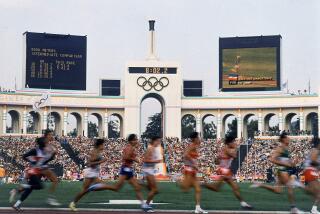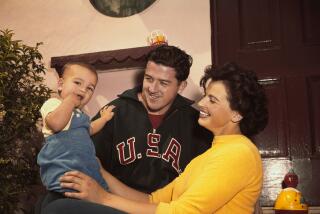Experiment With Steroids Provided a Frightening Lesson
For 3 weeks in the winter of 1972, while training for her fifth Olympics, Olga Connolly turned to the world-class athleteâs little helper, anabolic steroids.
âI had four kids and a full-time job,â she said. âThe only time I had for weightlifting was at night. I was getting nowhere. I was stuck at 165 pounds.
âThereâs a saying in the discus, that you can throw a foot for each pound you can bench-press. I needed 186 to beat my personal best.â
She said that she took about one-half the menâs daily dosage of Dianabol, the most popular steroid among athletes at the time.
âAfter 3 weeks, I was bench-pressing 200 pounds,â she said.
But she said that she quit when she began to grow hair on her knees.
âMy doctor (who had not prescribed the steroids) told me that the next step would be to go bald,â she said.
Connolly said that at the 1968 Summer Olympics in Mexico City, she realized for the first time that some women were using steroids. She said that by the 1972 Summer Olympics in Munich, steroid use was widespread. The International Olympic Committee did not begin testing for steroids until 1976.
âOf 12 discus throwers in the weight room, only three of us werenât on the drug,â she said. âThe other nine women were lifting well over 200 pounds, 220 and 230 in some cases. It was really devastating to know that we were beaten even before we competed.
âI went to the weightlifters and tried desperately to get a steroid booster shot. But they explained to me that it doesnât work that way.â
In 1968, the gold medalist in the womenâs discus won with a throw of 191 feet 2 inches, more than 27 feet shorter than gold medalist threw 4 years later. The eighth-place finisher in 1972 had a better throw than the 1968 champion. Connolly, the 1956 gold medalist with a throw of 176-1, finished sixth in 1968 and 16th in 1972.
âI could either go on steroids or quit completely,â she said. âI decided to quit completely. It wouldnât have been me throwing. It would have been a completely different organism. There would have been no personal challenge in it.â
More to Read
Go beyond the scoreboard
Get the latest on L.A.'s teams in the daily Sports Report newsletter.
You may occasionally receive promotional content from the Los Angeles Times.






